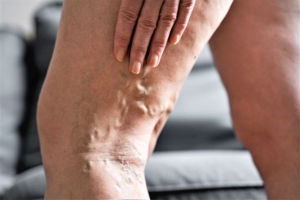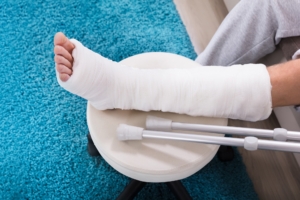Varicose veins are a common condition that affects a significant proportion of the population, particularly as people age. While many factors can contribute to the development of varicose veins, including genetics, pregnancy, and prolonged periods of standing or sitting, prior orthopedic injuries may also play a role. In this blog post, we will explore the connection between prior orthopedic injuries and the development of varicose veins later in life.

What are Varicose Veins?
Varicose veins are enlarged, twisted veins that are visible just below the surface of the skin. They most commonly occur in the legs and can cause discomfort, pain, leg swelling, and aching. Varicose veins develop when the valves inside the veins that regulate blood flow become weak or damaged. When these valves do not function correctly, blood can flow backward and pool in the veins, causing them to bulge and become visible.
What is an Orthopedic Injury?
Any injury to the musculoskeletal system is considered an orthopedic injury. These can occur in most joints throughout the body and can include, but are not limited to:
- Fractures
- Sprains
- Breaks
- Disclocations
- Overuse injuries
How Orthopedic Injury Can Lead to Varicose Veins
Orthopedic injuries can contribute to the development of varicose veins in several ways. When a person sustains an injury to a joint or limb, they may be less likely to move around as much as usual, and this can lead to decreased blood flow. Reduced blood flow (stasis) can cause blood to pool in the veins, leading an element of phlebitis that later can lead vein valve damage and subsequently varicose veins.

Being in a cast or other immobilizing device can have the same effect and also contribute to the development of varicose veins. This is not to say you should never have a cast, but it might explain why someone might develop varicose veins after an injury with immobilization or a cast.
Another way that musculoskeletal injuries can contribute to varicose veins is by altering the way that a person walks or stands. When someone has an injury to their leg or foot, they may develop a limp or favor one side, which can put extra pressure on certain veins. Over time, this can impact the veins since walking is important for vein health. When gait and walking are impaired, it can ultimately contribute to the development of varicose veins.
If a person has a genetic predisposition to varicose veins, an orthopedic injury may hasten the appearance of varicose veins sooner than they otherwise would have appeared.
Orthopedic Injury Doesn’t Always Lead to Varicose Veins
It is important to note that not all musculoskeletal injuries will lead to varicose veins, and not all cases of varicose veins are caused by prior injuries.
However, individuals who have sustained orthopedic injuries in the past appear to be at an increased risk for developing varicose veins later in life, particularly if they have other risk factors such as a family history of the condition or a job that requires prolonged periods of standing or sitting.
Do You Have a History of Bone or Joint Injuries?
If you have a history of orthopedic injuries and are concerned about developing varicose veins, there are steps you can take to reduce your risk. Staying active and maintaining a healthy weight can help improve blood flow and reduce your risk of developing varicose veins. Additionally, staying active and wearing compression stockings or socks can help improve circulation and alleviate symptoms of varicose veins.
In conclusion, while many factors can contribute to the development of varicose veins, prior orthopedic injuries may also play a role. If you have a history of bone or joint fractures, sprains, discolorations, and/or other musculoskeletal injuries, it is essential to be aware of the potential risk and take steps to reduce your risk of developing varicose veins later in life. By staying active, maintaining a healthy weight, and taking other preventive measures, you can help keep your veins healthy and reduce the likelihood of developing varicose veins.